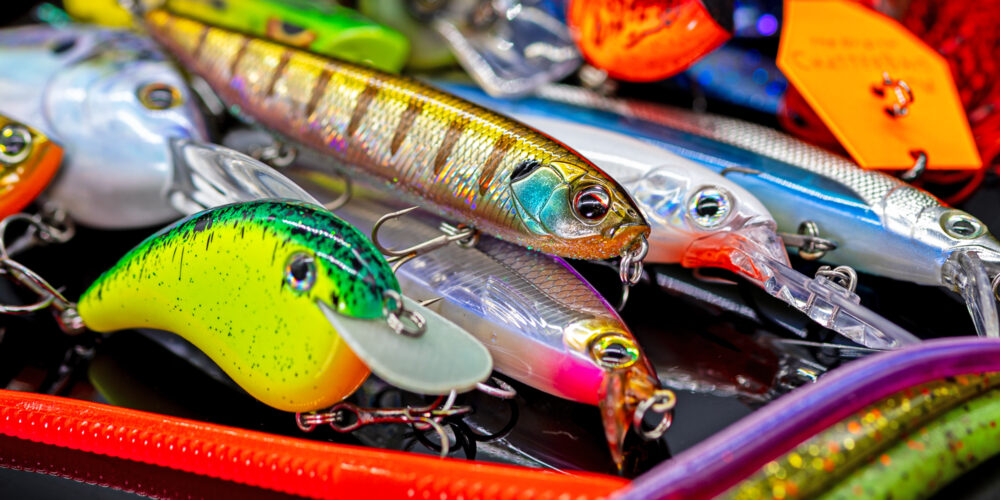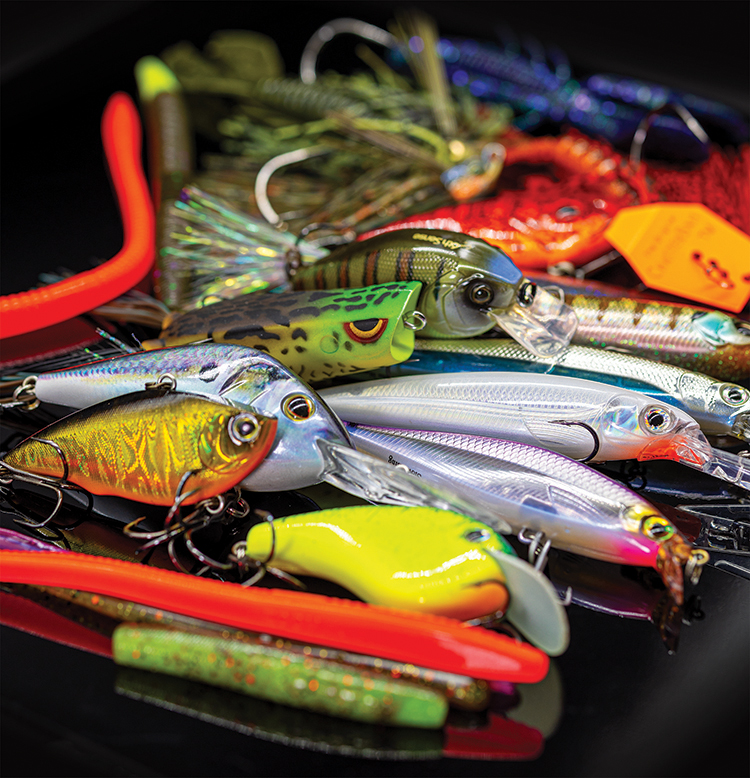Color Blindness – When is color important … and when is it not?

Some things in life simply don’t make much sense. Lure color is definitely one of them.
There are jerkbaits that look like the real thing and others that look like they were painted in my daughter’s first-grade art class. Yet, both catch fish. There are 132 colors of the Yamamoto Senko on the market, but most anglers only throw some version of green pumpkin (which, while we’re on the subject, doesn’t actually look anything like the color of a real green pumpkin).
And while plenty of anglers think any silver or pearl crankbait looks enough like a shad, others get hyper focused on the subtle nuances of their shad patterns, even willing to plunk down $10, $20 or more for a custom paint job with scales that are 0.4 mm in diameter and juuuuuust the right shade of periwinkle blue on the gill plates.
But why? Does it really matter?
Whether you think it does or doesn’t, you’re right. I mean that in the sense that I know there’s not much I can say to sway you off your stance. So, I’m not going to try. I will, however, examine a few different scenarios like the ones above that don’t seem to make sense on the surface and try to apply a little logic. Let’s start with the latter.
Crankbaits
If there’s a lure that gets custom painted more often than a crankbait, I don’t know it.
There are few things prettier than a custom-painted crankbait. It could be hanging in the mouth of an 8-pounder or off the end of my thumb thanks to an 8-ouncer burying a treble hook into me, and either way, it’s a gorgeous work of art.
More often than not, it doesn’t make one bit of difference. That’s not a knock on your favorite painter’s talents. But let’s think about the reality of the situation.
Do you really think a bass has the time to scrutinize the scale pattern on a crankbait as it burns by at half the speed of sound? Heck no! It’s a blur, and the fish’s pea-sized brain has a nanosecond to decide whether or not that blur looks edible.
Now, anyone fishing smallmouth on the Great Lakes might take offense to this assertion, as it’s clear there’s a certain color of the OSP Blitz DR crankbait that seems to get bit quite a lot. The same goes for a specific hue of the Megabass S-Crank on Lake Murray. You could argue those colors catch more fish because someone caught a big bag on them once and everyone else joined the bandwagon, or perhaps those examples point to another truth about color…

Water clarity
Ever tried to read the label of your K-Cups to figure out which one is French roast without turning on all the lights in the kitchen? Not exactly an easy task.
Welcome to what a bass deals with all the time.
While we have the benefit of viewing the world through clear air, bass view it through water. And most of the time, it’s stained water.
Back to the coffee example: You’re more likely to identify the right coffee pod by the contrast of colors on its top versus the detailed writing on the label, especially in the dark. Bass are no different in stained water. The dirtier the water, the more likely that contrast will win out over detail. However, in clear water, like on the Great Lakes or lakes like Murray, there are definitely times when that extra realism pays off. That’s because (I hope you’re sitting down) the fish can actually SEE it. The better look bass can get at the lure, the more they can scrutinize it, which leads us to …
Jerkbaits, swimbaits and other snails
Want to drop $20 on a gorgeous paint job and make it count? Put it on a jerkbait.
Why? Because when a jerkbait is sitting suspended in the face of a bass, it has to hold up to intense scrutiny. That’s when that periwinkle-blue gill plate may actually be the thing that convinces the fish to open its maw.
Swimbaits are no different — at least when it comes to the large, slow-moving ones. They offer a lot of surface area to scrutinize and are generally fished at a pace that allows bass to get a good look, especially ones that follow the bait for a while. Spring for a bait that looks the part versus a cheaper option. Or try …
Custom painting soft plastics
Seriously, how is custom painting soft plastics not more of a thing?
We go nuts over custom-painted hard lures, but when it comes to soft plastics, the biggest color “advances” seem to be adding glitter or laminating two colors together. Even when it comes to soft plastics that are already painted by the manufacturer – frogs, swimbaits, etc. – most still just settle for whatever colors the company decides to release as opposed to thinking up their own custom hues.
Why the discrepancy?
Sure, people dye tails and claws of their soft plastics all the time, but there are numerous options for both airbrush and hand painting that can turn a plain pearl swimbait into a living fish or a frog into something that truly stands out when it comes off a lily pad. Yet, few people think to do it like they would a hard lure.
It doesn’t make sense.
Then again, not much about bass fishing colors does. The only two rules I’ve found that consistently hold true: Whatever color gives you confidence is the right color, and most colors were made to catch fishermen, not fish.